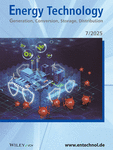Instructions for Referees
This guideline gives a short overview on how to evaluate a manuscript you were invited to review. Please see wileypeerreview.com for additional resources and instructional material for reviewers if required.
Please give an overall recommendation as to whether the manuscript should be accepted in its present form, with minor or with major revision, or is not at all acceptable. Please formulate the comments for the authors in a polite form, even when heavy criticism is being delivered.
Minor alterations include:
- to correct references or add more references
- to improve the quality of graphics
- to give more accurate explanations for some of the results
- to include (more) results of experiments that can easily be performed or to give more data that can easily be obtained
- to shorten the manuscript
- to correct typos or other minor mistakes
Major alterations include:
- to include results of more sophisticated experiments/calculations that could take several weeks
- to completely rewrite the manuscript
Manuscripts that require major revision may be re-evaluated by the referee(s). Please indicate whether or not you are willing to review a revised version of the manuscript. If you recommend rejection due to the scope of the submission, please recommend a different journal, which is more appropriate.
To help us assess the paper, we request that you answer the following questions:
1. Is the subject suitable for publication in Chemical Engineering & Technology?
If you answer "No", please explain why and also include a suggestion of a journal that this article would be best suited. Put these comments into the box below labeled "Confidential Comments to Editor-in-Chief".
2. Is it clearly presented and well organized?
Assumptions and hypotheses brought forward in a manuscript must be in accord with the experimental and/or theoretical results. Very detailed or analytical data, which exceed the scope of the Experimental Section, e.g., spectra or large tables, should be given in the Supporting Information. Please note: readers must be able to read the manuscript without needing to retrieve the Supporting Information.
3. Adequate referencing to related work?
Is all relevant prior work cited and discussed? Or has relevant prior work been overlooked or is not discussed appropriately? Does the manuscript include many papers with low relevance to the current study?
4. To which part is the paper most suitable?
Please indicate which kind of manuscript type is most suited for the present work (Research Article, Communication, or Review).
Research Articles (limited to 28 000 characters incl. blanks) report details of studies that have not been published previously, except in the form of a preliminary note. Communications (limited to 18 000 characters incl. blanks) are short reports on experimental or theoretical studies in all areas covered by Chemical Engineering & Technology. The results of Research Articles and Communications must be of general interest or at least contribute to the development of an important area of research. The paper should start with an introduction that provides the nonspecialist reader with a general idea of the state of the art of the field and allows the importance of the results to be put into perspective. In the final paragraph, the results should be summarized succinctly, and one sentence should be devoted to their significance and, if appropriate, to the next challenges.
Reviews (limited to 45 000 characters incl. blanks) give a general overview of a particular field providing the reader with an appreciation of the importance of the work. Rather than an assemblage of detailed information with a complete literature survey, a critical selection of the material is desired. The introduction should primarily introduce the nonspecialist to the subject in as clear a way as possible. A review should conclude with a summary and outlook, in which the achievements of and new challenges for the subject are presented succinctly.
The novelty statement is especially important for all article types. As a rule of thumb the following questions should be answered:
- What is the status quo?
- What is wrong with the status quo?
- How does this work go beyond the status quo?
Your comments can be typed in the corresponding fields ("Comments to the Editor-in-Chief" and "Comments to the Author") and you can also upload an additional file. In the latter case, please type "See attached file" in the field "Comments to the Author". Please ensure that any formulations or file information will not give away your identity when uploading an attachment for the author.









